CSUF ART 201A EXAM 1 Slogar
1/25
There's no tags or description
Looks like no tags are added yet.
Name | Mastery | Learn | Test | Matching | Spaced |
|---|
No study sessions yet.
26 Terms
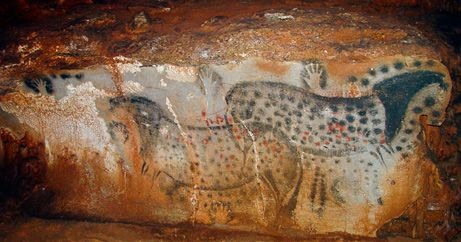
FRANCE. Paleolithic
Prehistoric Cave Painting
Pach-Mel, France
Air brush technique with charcoal blown through a hollow bone.
Used as teaching tools
Evidence of children hand-marks and footprints
Wanted to keep it private
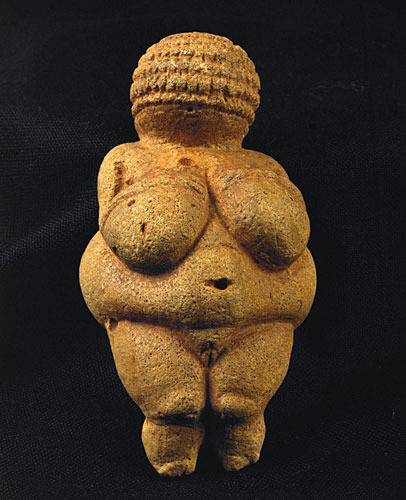
AUSTRIA. Paleolithic
Upper Paleolithic period
Sculpture made from Limestone
Austria
Symbolic of health and fertility
Believed to be the desired body type
Motherhood/Fertility
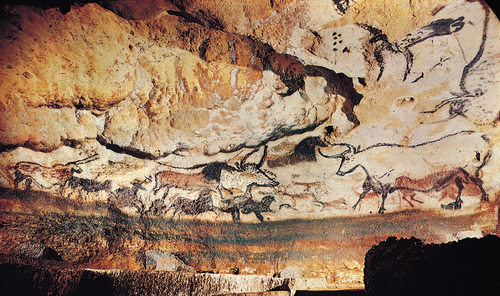
FRANCE. Paleolithic
Prehistoric Cave Paintings on Limestone
Lascaux Cave in Southern France
Impressed Picaso
Animals are full of life and are in composite pose
Curving of wall suggest space
Animals are overlapping and in rows
High up on the ceilings
Could have been used to teach children which animals to run away from

ENGLAND. Neolithic
Prehistoric
Neolithic stretched to Bronze Age
Megalithic Monument
Bluestone and Gray Sandstone
, England
Started as cemetery of cremation burials
Bluestone was transported (important)
Ceremonial site
Farmers used this to kept track of the time of the year (Calendar)
Someone was able to direct all the labor. (Stones were heavy)
Cemetery, Spiritual site, etc.
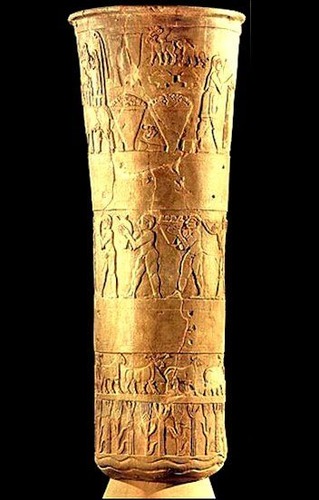
IRAQ. Sumerian
Narrative art
Stories are related to the images
Bottom = water & plants
animals
people
Goddess of war and fertility
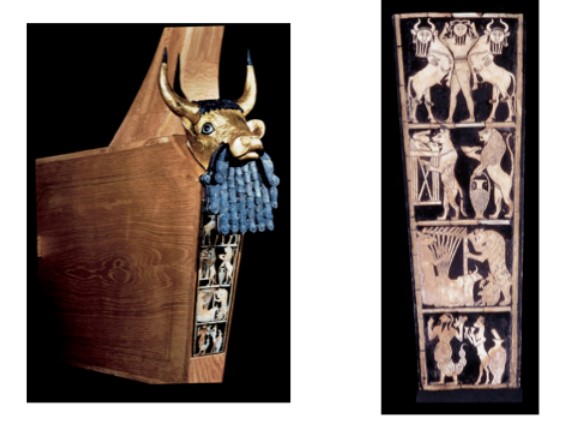
IRAQ. Sumerian
Sumerian Style
From royal tomb in Ur
Wood with gold, silver lapis lazuli, bitumen and shell
Rested over body of woman who played lyre during funeral ceremonies
On registers: donkey plucks strings of bull lyre and a fox is playing a rattle
Next register: Animals bring food/drink for feast
Hyena who is a butcher and lion with pouring vessel
Bottom Register: From the "Epic of Gilgamesh"
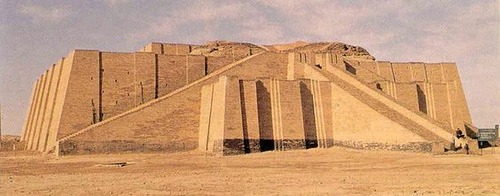
Sumerian
-
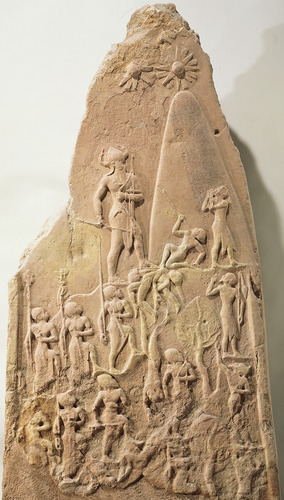
IRAQ. Akkadian
Showing us a "all powerful king"
kicking and stepping on soldiers
proclaiming himself a God on earth
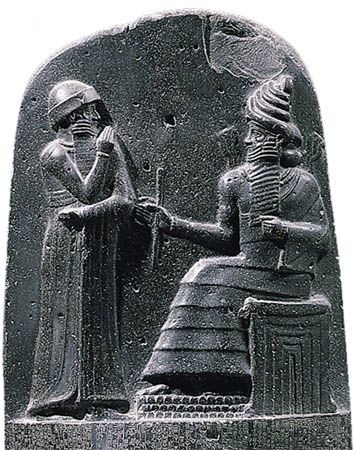
IRAQ.
Babylonian
Everyone knew what the rules were, and consequences were
If you're from the elite, punishment was less harsh

IRAQ.
Assyrian
Wife having a feast
Fan holders
Military victory
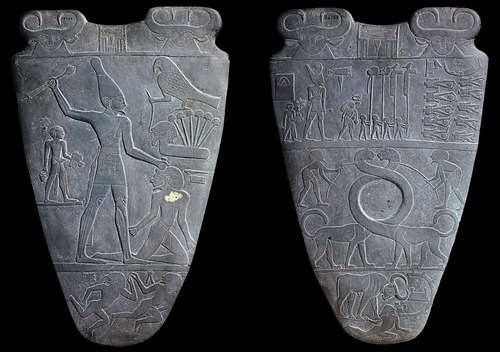
EGYPT. Early Dynasty
Horus
Narmar is very powerful
"Upper and Lower Egypt are equal"
From Hierakonpolis. Early Dynastic Period
Found in temple of Horus
Made from Green schist
Used to ground eye makeup & as a ceremonial piece
Represents the unification of Egypt and the beginning of the country's growth as a powerful nation-state
"Narmer is beheading an enemy from lower Egypt Above this is Horus (falcon) holds a rope tied around the neck of a head that has papyrus in it (Lower Egypt) Cats curled and touching noses=peace between Upper and Lower Egypt"
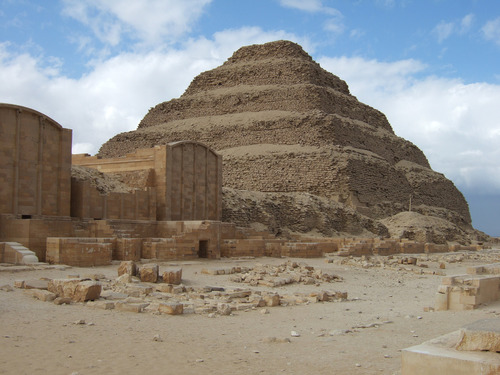
p. 54
EGYPT. Old Kingdom
First Egyptian pyramid
Djoser's fake city
Thought he would stay there after death

EGYPT. Old Kingdom (4th Dynasty)
Limestone and granite
Built by Khufu, Khafre, and Menkaure
Follow sun's east-west path
Pathway from Nile to pyramid where king was carried into chamber
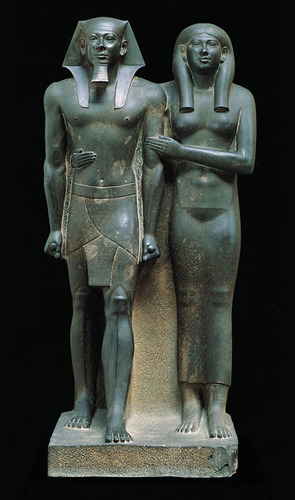
EGYPT. Old Kingdom
Royal
Stiff
Wants to portray themselves and powerful

EGYPT. Old Kingdom
Humble figure
Someone educated and in elite class
Body is soft unlike most of the people around the time who had to work hard, often ending up skinner and rougher
Paid extra money for the sculpture (eyes are more life-like)
Showed that Egyptians had the skill to carve realistically

EGYPT.
New Kingdom
Eighteenth Dynasty
Red Granite
Represented as a male king wearing a kilt & linen headdress, occasionally even a king's false beard
She was adapted to conform to convention
She adopted the male costume of a king

EGYPT.
New Kingdom
Eighteenth Dynasty
Painted limestone relief
New Amarna Style • Sun disc in the center is symbolic of Ahten (The Sun God) Rays are giving them life Sunken Relief: Figures are deeply incised
For the first time the fidgety behavior of children is conveyed and the loving involvement of parents
Atom was credited for giving life to people.
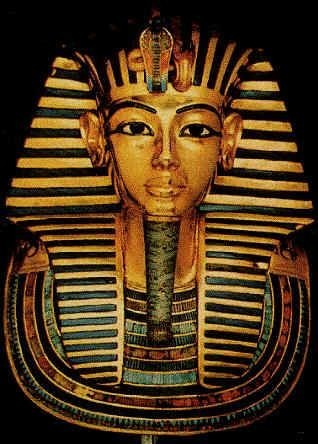
EGYPT.
New Kingdom
Eighteenth Dynasty
New Kingdom
Valley of the Kings
Gold inlaid with glass & semiprecious stones
Placed over head & shoulders of mummified body • Solid gold • Symbolic of being a military ruler • Realism
"Believe that he was killed because he did not have any heirs & was young Pulled major organs out and mummify them separately with salt to dry them And wrap them in linen"
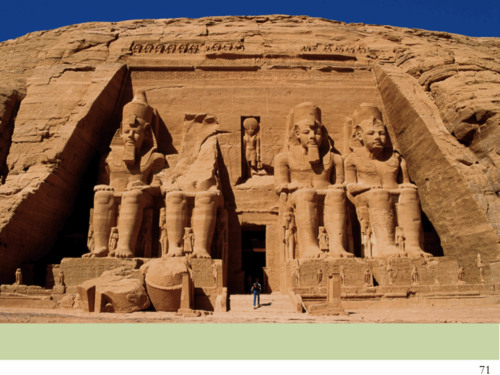
EGYPT.
New Kingdom
Monument
Nineteenth Dynasty
New kingdom
Carved into the rock
Four colossal statues of Ramses in a row and small statues of family members & Nefertari
Honorary temple NOT funerary
• In the center is a dedication to Horus and Ra (disc on top of head) • In between him are depictions of god • Row of baboons are symbolic of dedication to Ra They are greeting the rising sun
"Inside: 8 statues of Osiris with face of Ramses to proclaim his divinity
The corridor they form leads to seated figures of Ptah, Amun, Ramses II, and Ra (twice a year the sun's rays illuminate the statues)"

p. 77
EGYPT.
New Kingdom
Painted papyrus
Nineteenth Dynasty • Top: Hunefer is dedicating himself to all of the 14 gods of the afterlife • Left: Hunefer led into scene by Anubis (god of embalming). He is holding an ankh. • Maat is the Goddess of Justice o Feather and heart are weighed against each other • Light hearted=Pass • Heavy hearted= Eaten by omit (hippo, lion, and crocodile) • Thoth: Recorded everything going on • Led over to Osiris by Horus holding an ankh His throne sits on river symbolism made of natron, which was the salt that they embalmed with. Out of it sprouts a lotus flower, which is a symbol of Lower Egypt and everlasting life. • On the lotus are Horus' four sons which stand for the major organs Behind Horus are his two sisters The eye of Horus: "the all-seeing eye". Links to the idea that he found his father, Seth's, body parts. Symbolic of him knowing everything that is happening
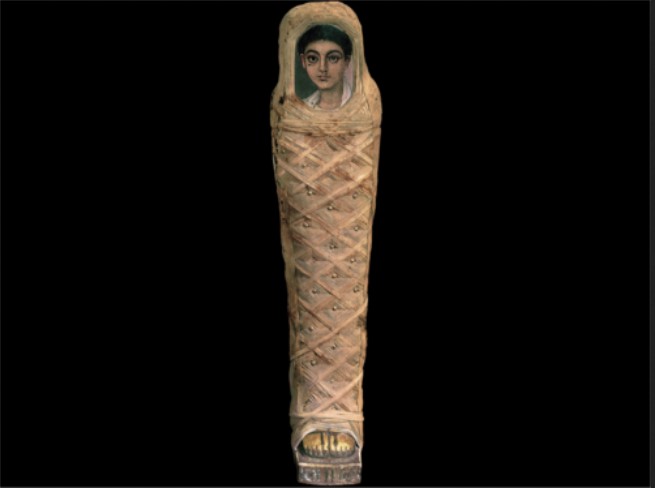
EGYPT.
Roman Period
First Century
Ancient technique
Roman and Egyptian style coming together

Knossos, Crete

Fresco (wall painting)
hair color indicates shes a girl

Palace of Knossos, Crete
Fresco

MYCENAE.
Mycenian
from Royal Tombs
Funerary Mask
First to ever depict mustache
miss attribution
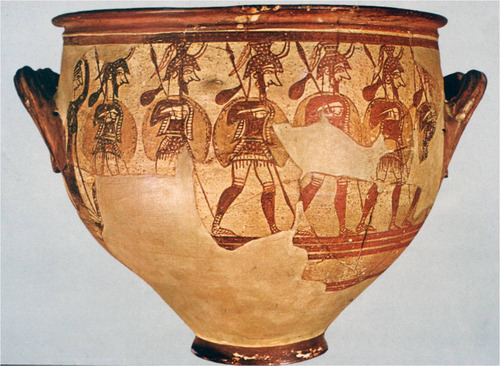
MYCENAE.
Mycenian
Krater
Girl grieving in the back